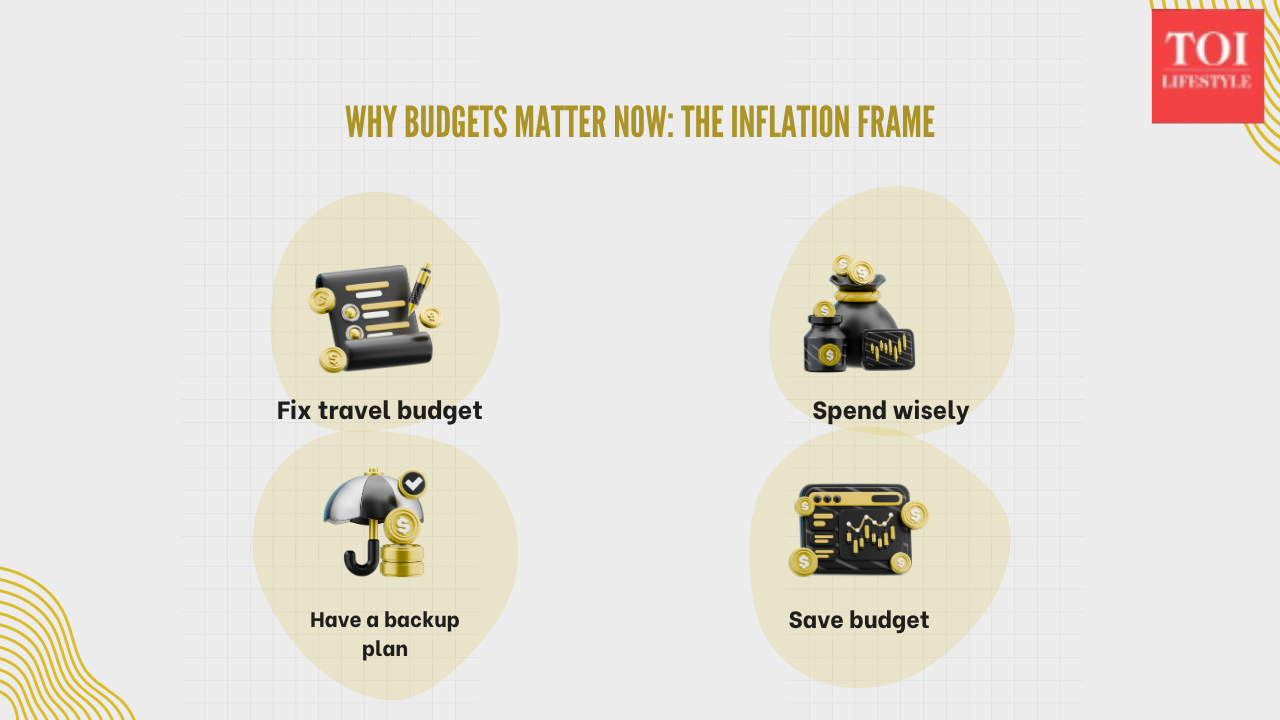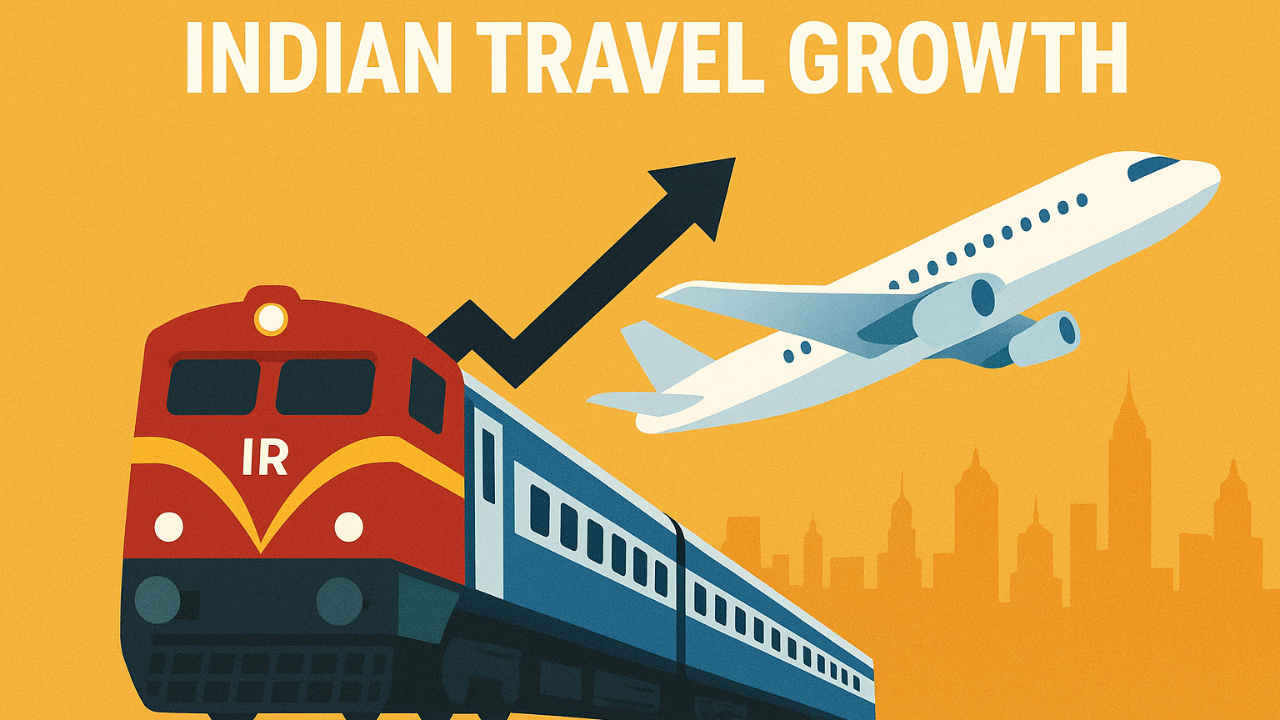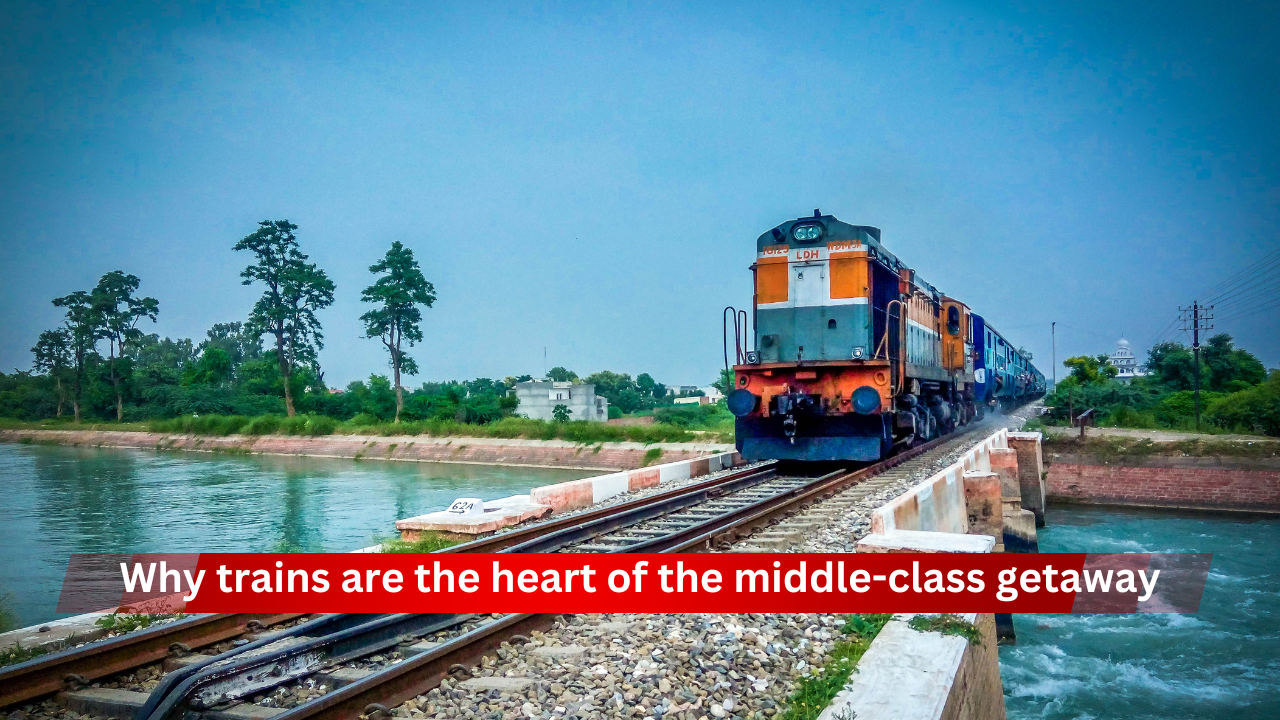“Travel is glamorous only in retrospect.” — Paul TherouxFor India’s middle class, it’s never been truer. The glamour fades fast when EMIs, rent, and grocery bills bite, yet the urge to travel endures. Families may trade Singapore for Sikkim, or Bali for Bhuj, but the desire to escape routine still drives them to pack their bags, albeit more cautiously. Nevertheless, for India’s middle class, which accounts for hundreds of millions of consumers, the response to slow wage growth and episodic inflation has been creative: shorter trips, smarter bookings, rediscovered domestic routes, and a new reverence for value. The practical choices that many make perfectly serve the “inflation era” traveller, one who values experiences over extravagance, compares every fare before booking, and plans holidays with the precision once reserved for monthly budgets.For them, a train journey isn’t just cheaper than a flight; it’s an overnight hotel on wheels. A homestay isn’t a compromise; it’s a cultural upgrade at half the cost. Every decision, from timing trips around flash sales to more, reflects a new travel ethic built on adaptability and intent.
Why budgets matter now: the inflation frame

In 2025, retail inflation in India moved through large swings. As per the Ministry of Stats, there has been a notable decline in year-on-year retail inflation to historically low levels in late 2025, driven largely by easing food prices; nevertheless, the mid-decade period (2022–2024) saw pulses of higher prices that changed household spending patterns. That macro trend matters because travel is discretionary: when core household costs rise, travel budgets are the first to be trimmed or repurposed.Two additional structural dynamics tighten the “budget belt” while simultaneously pushing travel demand upward. First, urban middle-class income growth has been uneven: wages in some sectors have lagged price rises, making cost-conscious choices necessary. Second, the rise in domestic connectivity, more trains, more flights, improved roads, has made travel possible for more households even as they economise on duration and amenities. Put simply: people want to travel, but they want to spend less for more experience. If we go by the Tourism Ministry’s recent data, it shows record growth of domestic tourist visits, evidence that demand has not collapsed.
The scale of domestic travel today

India’s Ministry of Tourism reported that 2024 saw domestic tourist visits in the hundreds of millions (the ministry’s annual report and data compendium give the full breakdown by state and type of tourism). The Indian railway system, still the backbone of budget travel, has registered record growth as passenger traffic recovered and grew year-on-year. At the same time, aviation is expanding: the Indian domestic air market is one of the world’s fastest growing, with rising passenger counts even after the pandemic. These high-level numbers explain why budget travel is meaningful not just as a lifestyle choice but as an economic phenomenon that shapes hotels, local economies and transport services.
What “budget” means in 2025 India
Budget travel is a spectrum, not a single price. Here, we have used three practical bands (per person, per day), based on travel operator and independent backpacker guides plus official tourism indicators:Ultra-budget / Backpacker: INR 1,000 – INR 3,000/day — hostel dorms or cheap guesthouses, trains and buses, street food, minimal paid entry fees. This is common among students, young couples, and solo travellers.Mainstream middle-class budget: INR 3,000 – INR 6,000/day — private budget hotels (economy category), occasional short flights, combination of trains and road travel, mix of street and restaurant meals. Typical for nuclear families and working professionals on long weekends.Value-oriented comfort: INR 6,000 – INR 10,000/day — AC trains or low-cost airline bargains, 3-star hotels that participate in discount platforms, paid guided experiences with deals. Favoured by families who want decent comfort but watch total trip cost.These bands are a practical tool for planning and match the ranges given in several traveller cost guides and hospitality price surveys. Keep in mind regional variation: a INR 3,000/day budget in Goa or Shimla yields a different experience than in a tier-2 city or a pilgrimage town.
Why trains are the heart of the middle-class getaway

Trains remain India’s default for budget travel. Affordable fares, sleeper options that double as accommodation for overnight legs, and widespread connectivity mean families can travel days on a shoestring. The Indian Railways reported rising passenger volumes in FY25 and has invested in capacity and digital ticketing, which makes last-minute planning easier. For many travellers, the cost advantage is decisive: a long overnight journey can replace both accommodation and a flight, producing big savings.A 12–16 hour inter-state sleeper journey (e.g., Delhi → Varanasi) in non-AC sleeper class (SL) typically costs a few hundred rupees per person; AC 3-tier fares are higher but still competitive versus a short flight, especially when families travel together and add up the airline fare for two adults and a child. Indian Railways’ push to modernise booking and cleanliness has nudged a new segment of middle-class travellers back to the platform as a practical, economical choice. The exact fares vary by route and class and are published by Indian Railways and IRCTC.
Flights — cheaper but fragile
Low-cost carriers have expanded domestic seat capacity, and periodic fare sales (including flash deals) make flying accessible to price-sensitive segments. But airlines’ base fares can spike with oil prices and peak-season demand; frequent fare volatility means that for true budget travellers the overall trip cost often still favours trains or buses unless a sale or dynamic pricing coincides with travel dates. Aviation industry analyses stress both growth potential and vulnerability to shocks.
Accommodation: the rise of value stays, homestays and micro-brands
Two parallel trends have reshaped low-cost lodging.Aggregation and micro-brands: Platforms and regional chains increasingly offer standardised budget rooms in tier-2 and tier-3 cities. Their USP is consistency, clean bed, hot water, wifi, at predictable prices. This reduces the “unknown” factor for middle-class families used to safety and hygiene standards.Homestays and community stays: Swadesh Darshan and local sustainable tourism initiatives encourage homestays and villager-run stays that are both economical and experiential. For many travellers the lower price tag combined with authenticity is attractive. The Ministry of Tourism’s programmes and grant schemes aim to upskill hosts and integrate such stays into official listings.Numbers: A competitive budget hotel room in many popular circuits now averages between INR 1,000 and INR 3,000 per night in low season; homestays and guesthouses can undercut that, especially outside metro hotspots. Special offer windows (festival off-season, monsoon discounts) are actively used to drive bookings.
Food and activities: local cuisine, low cost experiences
Street food and local eateries remain the most effective ways to stretch a daily budget. A typical street meal can cost INR 50 – INR 200 depending on city and dish; a family can eat well for under INR 1,000 in many circuits by balancing one restaurant meal with street meals. Cultural or natural experiences (local treks, temple visits, small museum fees) usually carry modest charges — often under INR 300 per head — keeping activity spends manageable.Key tactic: mix a free nature day (beaches, parks, hikes) with one paid experience (boat ride, wildlife jeep) to preserve both savings and memorable moments.
Booking tactics that save real money

Through interviews with travel-tech operators and by examining marketplace patterns, five practical moves emerge repeatedly:Book trains first, flights second — if a route is covered by both, reserving a cheap train ticket for the backbone journey and using a short domestic flight only for the longest leg reduces cost and keeps flexibility. IRCTC and railway statistics show how AC sleeper classes and reserved seats have become popular cost centres for families.Leverage weekday travel — avoiding weekends and national holidays brings lower hotel and air fares. Industry analyses show clear price dips mid-week.Use aggregator flash sales and bank discounts — many middle-class travellers now time purchases to sales (festivals, double-digit discount days) and use credit/debit card offers to shave off 10–20% of ticket or hotel costs.Book refundable or partially refundable rooms with price-match vigilance — when rates fall, rebook or claim lower rates; many budget players let users cancel with nominal fees.Shorten trip length but increase frequency — instead of a 10-day full-budget holiday, families are taking multiple 2–4 day long weekends. This keeps annual spend similar but allows more diverse experiences and lower per-trip wage/savings disruptions.These tactics are widespread and visible in search patterns on travel sites and in operator reporting.
Technology & payments: UPI, apps, and the digital wallet of the traveller

Digital payments (UPI and wallets), flight/hotel aggregators and IRCTC’s mobile booking are central to modern budget travel. UPI’s ubiquity reduces exchange friction and allows microtransactions (street food, local guides) to be cashless — a boon for safety and expense tracking. Travel platforms now embed UPI and bank offers, enabling instant discounts. This payment layer is especially important for middle-class families trying to keep a tight ledger on holiday spending.
How hotels, airlines and aggregators adapt
Hotels: budget chains and micro-brands offer bundled family deals (room + breakfast + local transfer) targeted at short stays, plus festival/off-season pricing.Airlines: increased point-to-point capacity and ancillary bundles (seat+meal) allow travellers to pick what they pay for; loyalty programmes and family-packs are being trialled. IATA and DGCA discuss growth and competitive dynamics in their reports.Aggregators & fintechs: flash sales, buy-now-pay-later and bank partnerships drive short-term affordability.This alignment between supply (discounted inventory) and demand (cost sensitivity) is why the middle-class getaway remains viable even amid fiscal caution.
Risks and tensions: overtourism, safety, and quality control
Budget travel’s democratisation strains fragile sites. The Ministry of Tourism recognizes overcrowding pressures and has introduced destination development programmes and sustainability frameworks to avoid degradation. Meanwhile, safety and hygiene expectations have hardened since the pandemic; budget providers that can’t meet minimum standards lose market share quickly. Data from states and ministry reporting indicate both growth and the need for sustainable management.
The future: trends to watch

Micro-vacations become permanent: multiple short trips per year will replace single long vacations for many families.Experience over luxury: curated local experiences (cooking classes, guided nature walks) priced affordably but high in perceived value will dominate.Hybrid transport itineraries: combined train + short flight + shared taxi itineraries minimize cost while maximizing convenience.Regional destination growth: states that invest in infrastructure and value products (homestays, last-mile connectivity) will win the middle-class traveller. Ministry grants and state policies will shape these winners.
Practical checklist for the inflation-era traveller (actionable takeaways)
Flexibility wins: travel mid-week, use refundable bookings and reprice if rates drop.Prioritise transport: book the most expensive leg early (usually flights) and optimize the rest with trains.Mix experiences: balance free, low-cost days with one paid highlight.Eat like a local: street food + one restaurant meal daily can halve food budgets.Leverage tech: use UPI, aggregator flash sales, and bank offers; set price alerts.Choose off-peak: travel outside school holidays to multiply value.
Policy & industry notes
Budget travel isn’t merely a consumer phenomenon; it shapes regional employment, informal economies (guide services, food stalls), and public transport investments. Government programmes that nudge sustainable tourism, homestay registration and last-mile connectivity can turn budget trips into recurring revenue for smaller towns and rural communities. The Ministry of Tourism’s strategic documents and the India Tourism Data Compendium indicate that domestic tourism is a major engine for regional development — and if managed well, budget travel can be inclusive growth rather than a strain on natural and cultural resources.
The paradox
In an era of price sensitivity, India’s middle class has not stopped exploring; it has simply become smarter, leaner and more experimental about how it spends. Trains and short rail-plus-road journeys reassert themselves as the backbone of affordable travel; homestays and curated local experiences supply authenticity without a luxury price tag; and digital payments and aggregators put discounts and planning power in the traveller’s hands. The result is a resilient, demand-heavy market that will reward providers who can deliver consistent value, safety and local engagement.Travel in 2025 is not about downgrading joy. It is about rediscovering itineraries that are longer on memory and smarter on rupees, and for a nation as large and diverse as India, that’s a future with vast possibilities.
 Unews World
Unews World
